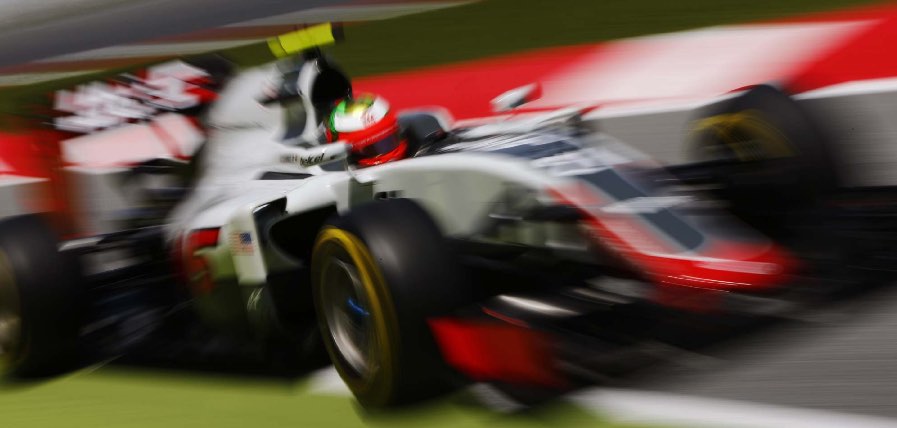Max Verstappen’s victory in the Spanish Grand Prix owed a lot to the collision between the two Mercedes drivers at the start, but once they were out, what swung it his way was pure race strategy and flawless execution from the 18 year old.
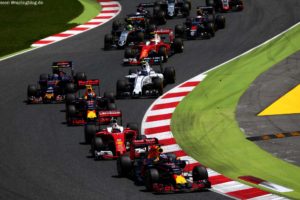 This race pivoted on a key decision, to switch to the riskier three-stop strategy. Both Daniel Ricciardo and Sebastian Vettel lost the race because of this call.Here we will analyse this momentous decision and look at how it affected the outcome; but which team made the bigger mistake – Ferrari or Red Bull?
This race pivoted on a key decision, to switch to the riskier three-stop strategy. Both Daniel Ricciardo and Sebastian Vettel lost the race because of this call.Here we will analyse this momentous decision and look at how it affected the outcome; but which team made the bigger mistake – Ferrari or Red Bull?
Before the race Pirelli said that three stops was a marginally faster strategy, but the experienced team strategists were all saying that they would be surprised if anyone did anything different from a two stop with a short stint on softs at the start and then two stints on mediums.
Simulations in recent years have shown that a three-stop is more risky at Barcelona, with the extra 22-second pit stop and with the need to pass a two-stopping car in the closing stages.
Overtaking has always proved difficult on this track unless there was a significant difference in tyre life or car pace. Even then, the lead car needs only to get a good drive out of the final chicane to have enough of a margin across the start finish line to hold onto the position.
Friday running showed that the degradation numbers all pointed to a comfortable two stop; the soft tyre was good for up to 14-16 laps, which meant around 30-32 laps each on two sets of new mediums to reach 66 laps. Straightforward.
Red Bull switches strategy for Ricciardo, Vettel covers, Verstappen wins
As much as Verstappen won this race, Ricciardo and Vettel both lost it.
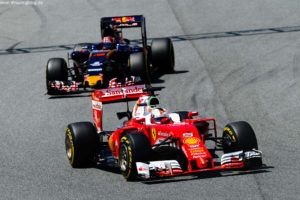 The most controversial decisions were Red Bull’s surprise move to switch Ricciardo onto a three-stop strategy on Lap 28, when he had the race under control and even more controversially, Ferrari’s decision to follow him.
The most controversial decisions were Red Bull’s surprise move to switch Ricciardo onto a three-stop strategy on Lap 28, when he had the race under control and even more controversially, Ferrari’s decision to follow him.
Once the two Mercedes cars were out of the race, there was a golden opportunity to win a Grand Prix for both teams, who badly needed it.
The whip hand was with Red Bull. They had track position advantage with Daniel Ricciardo ahead of Max Verstappen, while Ferrari were third and fourth with Vettel and Raikkonen.
Both teams felt that the Ferrari was faster. But the red cars had underperformed in qualifying, leaving the door open for Red Bull. Surely they would be aggressive on strategy to go for the win?
Vettel lost time behind Carlos Sainz early on, but once clear of the Spaniard, he looked quick.
Ricciardo stopped first on Lap 11, followed by Verstappen and Raikkonen a lap later. Vettel stayed out until Lap 15 to start building a tyre offset to the others. This was not the move of a man who was planning to stop three times. Quite the reverse.
Still, Red Bull felt vulnerable to a Ferrari attack. In selecting their tactics, they may have recalled Suzuka 2013 with Vettel and Webber racing against Lotus and Romain Grosjean. Back then they pitted the lead car Webber, onto a three stop strategy, knowing that Grosjean would react and Vettel on a two stop could win the race, which is what happened.
But this was different. The obvious thing to do in Barcelona was to ask Verstappen to drop back three seconds behind Ricciardo, dropping Vettel out of range of undercutting the Australian. From there Ricciardo would be certain to win the race and a team victory would be secure. Verstappen would probably have finished third in that scenario.
But they either didn’t want to ask Verstappen to do that or didn’t want to prioritise Ricciardo for the win. Perhaps a supremely strong result for Verstappen on his Red Bull debut would justify dropping Daniil Kvyat in favour of the Dutchman. Perhaps, based on his track record of accepting team orders at Toro Rosso, they didn’t think he’d comply!
Verstappen looked slightly quicker than Ricciardo in the second stint, but the Australian was also driving to a two-stop plan and so was pacing his tyres.
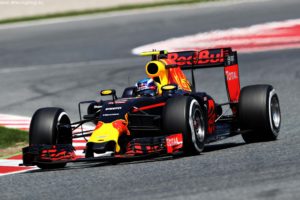 Either way, the strange moment came on Lap 28 when Red Bull pitted the lead car, Ricciardo, committing him to a three-stop strategy. The problem with 3 stops in that scenario is two-fold; he had already lost three or four seconds by running at his pace compared to an optimised three stopper, plus you don’t get enough back from the pace of the extra tyres to make up for the 22 seconds lost in the extra stop, plus you commit to having to overtake 2 stoppers at the end of the race.
Either way, the strange moment came on Lap 28 when Red Bull pitted the lead car, Ricciardo, committing him to a three-stop strategy. The problem with 3 stops in that scenario is two-fold; he had already lost three or four seconds by running at his pace compared to an optimised three stopper, plus you don’t get enough back from the pace of the extra tyres to make up for the 22 seconds lost in the extra stop, plus you commit to having to overtake 2 stoppers at the end of the race.
So it was a big and unnecessary risk for the lead car and none of the other teams’ race strategists could quite believe it when Ricciardo pitted. Christian Horner said after the race that they did so to pre-empt Vettel three stopping and splitting the strategies was the best way to cover their bases.
This sounds a little like a retrofit of the story to the events, but to be fair to them there was an argument for splitting the strategies to make Red Bull have to work for the win. It was just very odd not to give the lead car with the most experienced race winning driver the best strategy.
Ferrari make an even bigger mistake
At this point Ferrari could have laughed out loud and carried on with both cars on two stop strategies. Yes they would have to deal with a fast finishing Ricciardo late in the race, but they would have two cars for him to try to pass and that would have been hard.
Meanwhile they had two cars against Verstappen, which meant that they could have undercut him with Vettel at the second stop and won the race.
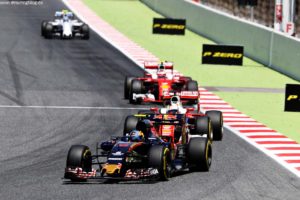 The key for Ferrari at this point was to put pressure on Red Bull, but Ferrari failed to do this. Vettel followed Ricciardo’s switch to three stops and condemned him not to win the race at that point.
The key for Ferrari at this point was to put pressure on Red Bull, but Ferrari failed to do this. Vettel followed Ricciardo’s switch to three stops and condemned him not to win the race at that point.
They did have Kimi Raikkonen still in the game with Verstappen, covering his two-stop strategy, but again they were unable to put enough pressure on the teenager and didn’t try the undercut on the second stop.
Verstappen was allowed the luxury of pitting first on Lap 34, with Raikkonen coming in a lap later. He followed closely to the finish but didn’t make life difficult enough for the teenager.
How to read this approach from Ferrari? The most likely scenario is that they lacked confidence; especially with an angry chairman Sergio Marchionne dropping in on race day, after they had underperformed in qualifying. Having told them they ‘have to win’ before the race weekend, the team needed to respond by being bold and they looked more like they wanted to avoid taking a risk that might backfire in front of the boss.
But with no pressure from behind as Williams and Bottas were a long way in arrears, they could have tried some aggressive moves; there were no negatives.
Red Bull and Mercedes have both noticed this and Ferrari has to be careful to address it internally so they can be more bold in future races, as they were many times last season.

